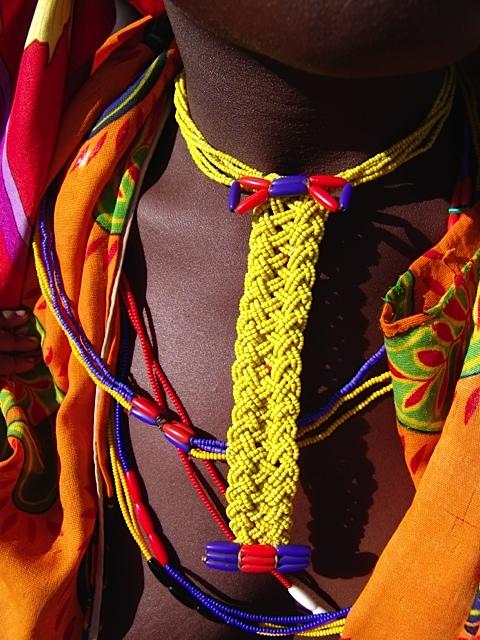
The Phansi Museum will be mounting its second exhibition of the year in the Phansi goes Phezulu Gallery, 500 Esther Roberts Road, Glenwood, tilted “The New Kids on the Block”. This exhibition will introduce the public to the latest treasures acquired for the Phansi Museum Collection. The exhibition comprises life sized puppets of the Herero, Himba and Hakawana people from northern Namibia adorned in ceremonial dress, beadwork and regalia. In contrast to the magnificent attire of the Herero people, we have on display a marvelous Victorian style wedding dress, dating back to the early 20th Century. The dress illustrates how German missionaries who settled in southern Africa in the 1850’s stamped their identity on the people of Namibia and how they encouraged them to wear clothes according to the fashion in Europe at the time.
Way up, in the north of Namibia things have settled down since the appalling wars of liberation and people are once again going about their daily lives. The area there is remote and the population dispersed as the soil has very little to share. The artefacts on display, was collected in the thriving little town of Opuwo with its three distinctly dressed groups , the Herero cattle farmers to the south east savanna, the Himba and the Hakawana people who live in the desert and scrublands to the north and west. Side trips to some of the distant homesteads in those areas uncovered marvelous objects of abundant skill and invention.
The proud Herero (meaning to throw an assegai) who after the devastating genocide during the early 19th Century rebuilt their nation and adopted the clothing of their victors and made it their own. Their own sense of beauty, pride and presence transformed the clothing from the floor length, staid and oppressive fashions of the Victorian era into great stately statements of vivid colour, joy and exuberance. Familiar of the Herero people is their reinvention of the common headscarf into a cow-horn-shaped head-dress, a symbol of their deep respect for their partnership with the bovine members of the community.
The Himba people although said to have the same forefathers as the Herero had nothing to pilfer from their foreign invaders and continued to treasure and develop the traditional body décor of leather and iron beads. Hairstyle and jewellery play a significant role among the Himba people and indicate the age and social status within the community. The entire Himba assemblage, including the body and adornments has a liberal mud bath of ochre clay (a mixture of ground red rock and butter or fat) that protects the body from the scorching sun, while keeping the skin clean and moist.
The Hakawana are noticeable by their magnificent beaded belts, each one different, which hold in place strips of colourful textiles on the lower bodies of the beautiful young girls. The spectacular hairstyles are exceptional works of art, decorated here and there with tiny beads, charms, bangles and necklaces fashioned by them with great skill from discarded bits of plastic and tubing.
The exhibition will be opened by highly respected, artist, Fiona Kirkwood on Saturday, 27 February 2016 at 10:00, at the Phansi Museum and Community Art Centre at 10:00. Music will be provided by the Durban Music Schools’ Marimba Band. Refreshments will be served. Entrance is free.
The exhibition closes on 31 March 2016.
For additional information contact the Director, Sharon Crampton on 031-206 2889 or admin@phansi.com
Disclaimer: Any views expressed by individuals and organisations are their own and do not in any way represent the views of The Heritage Portal.
